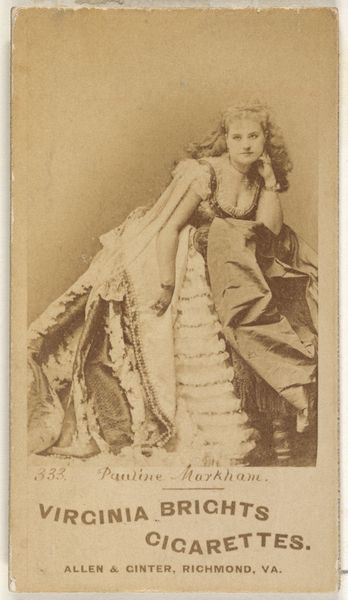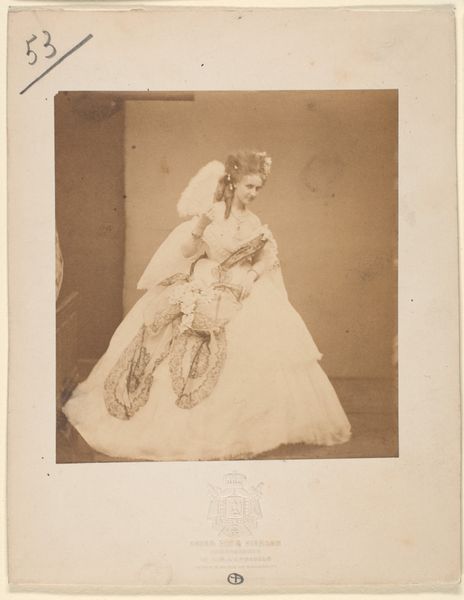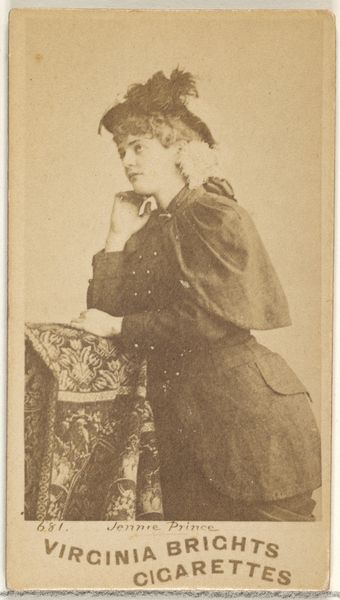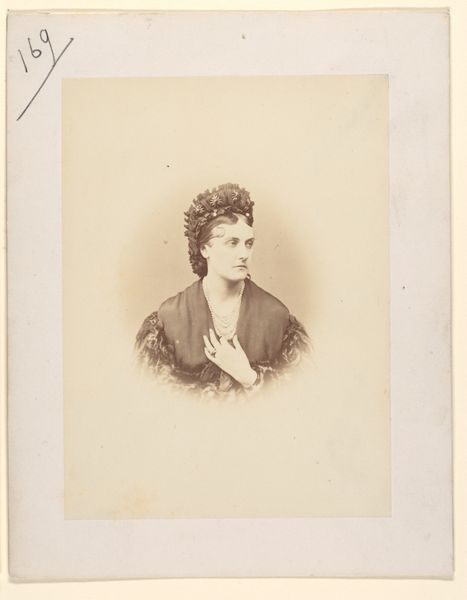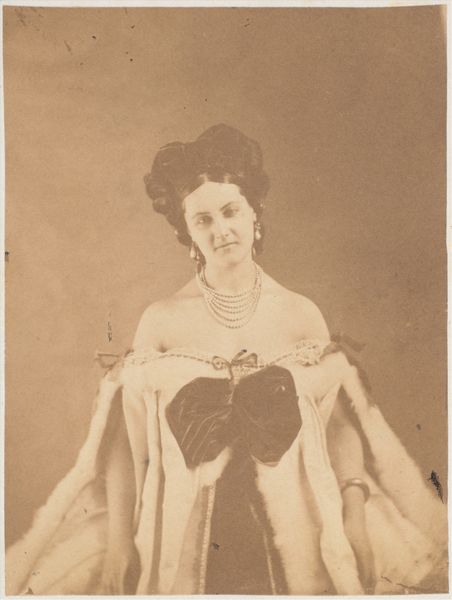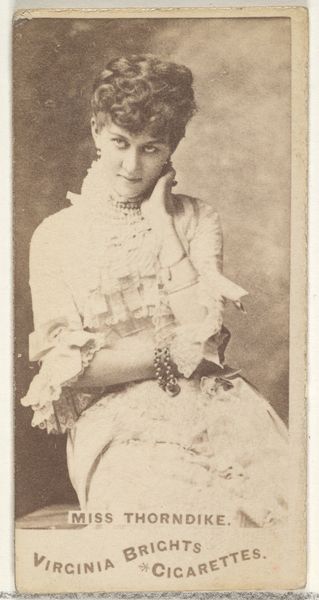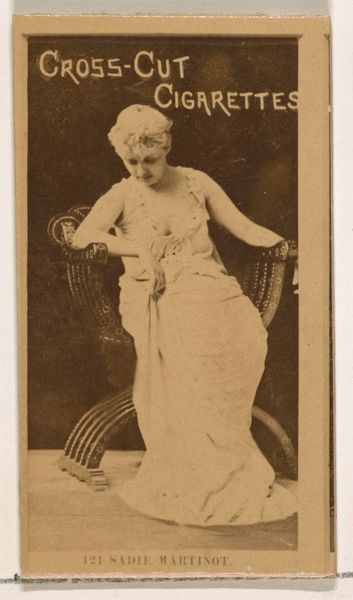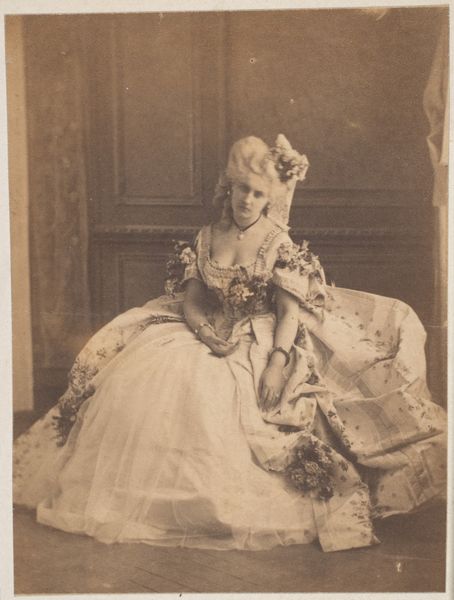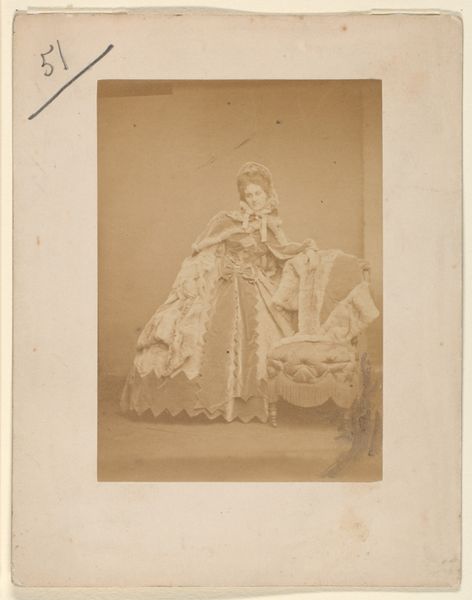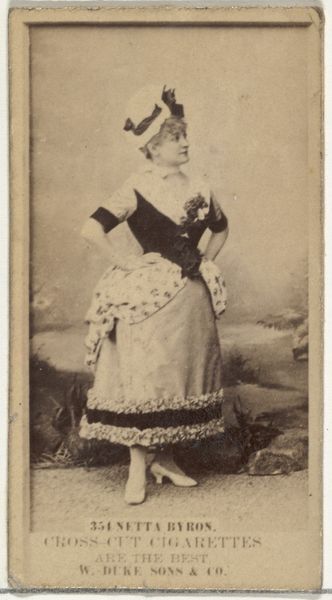![[Trying for Snapshots] by Pierre-Louis Pierson](/_next/image?url=https%3A%2F%2Fd2w8kbdekdi1gv.cloudfront.net%2FeyJidWNrZXQiOiAiYXJ0ZXJhLWltYWdlcy1idWNrZXQiLCAia2V5IjogImFydHdvcmtzLzMzODJhYzA3LWNjYzYtNDRiNy05YjI1LTkzYWM0MmJiYTU0Yy8zMzgyYWMwNy1jY2M2LTQ0YjctOWIyNS05M2FjNDJiYmE1NGNfZnVsbC5qcGciLCAiZWRpdHMiOiB7InJlc2l6ZSI6IHsid2lkdGgiOiAxOTIwLCAiaGVpZ2h0IjogMTkyMCwgImZpdCI6ICJpbnNpZGUifX19&w=3840&q=75)
daguerreotype, paper, photography
#
portrait
#
daguerreotype
#
paper
#
photography
#
19th century
Dimensions: Image: 9.6 x 7.7 cm (3 3/4 x 3 1/16 in.) Mount: 12.1 x 8.9 cm (4 3/4 x 3 1/2 in.)
Copyright: Public Domain
Editor: So, here we have *Trying for Snapshots* by Pierre-Louis Pierson, dating from the 1860s. It's a photograph, a daguerreotype on paper. What strikes me is how theatrical it feels, like a posed still from a play. What stands out to you? Curator: It’s fascinating to consider how photography in the 19th century shaped ideas of representation. These portrait studios like Pierson's catered to a burgeoning middle class eager to emulate aristocratic ideals. Look at the elaborate dress and the studied pose. It speaks volumes about the social aspirations of the sitter and the broader democratization of portraiture. How do you think the context of this photograph, it being available for consumption, impacts the historical moment? Editor: I hadn’t thought of it in terms of democratization before. It's less about capturing an individual and more about performing a certain role, like the 'ideal' woman of the time. Were women constrained to follow such models? Curator: Exactly. This performance highlights the powerful influence of visual culture. Photography helped to standardize ideals of beauty and respectability. But consider also the agency involved. These women, in choosing to present themselves this way, were actively participating in shaping their own image and social standing. The rise of commercial portrait studios helped form what it means to perform identity through visual mediums. Editor: So it’s both a constraint and a tool? That’s a helpful perspective shift. This was such a fascinating way to discuss and contextualize identity and performance, especially related to women, and made the artwork feel like a product of an industrialized view of persona. Curator: Precisely! Thinking about these pieces as documents and the beginning of identity consumption as a widespread part of public consciousness creates another layer to their significance.
Comments
No comments
Be the first to comment and join the conversation on the ultimate creative platform.
